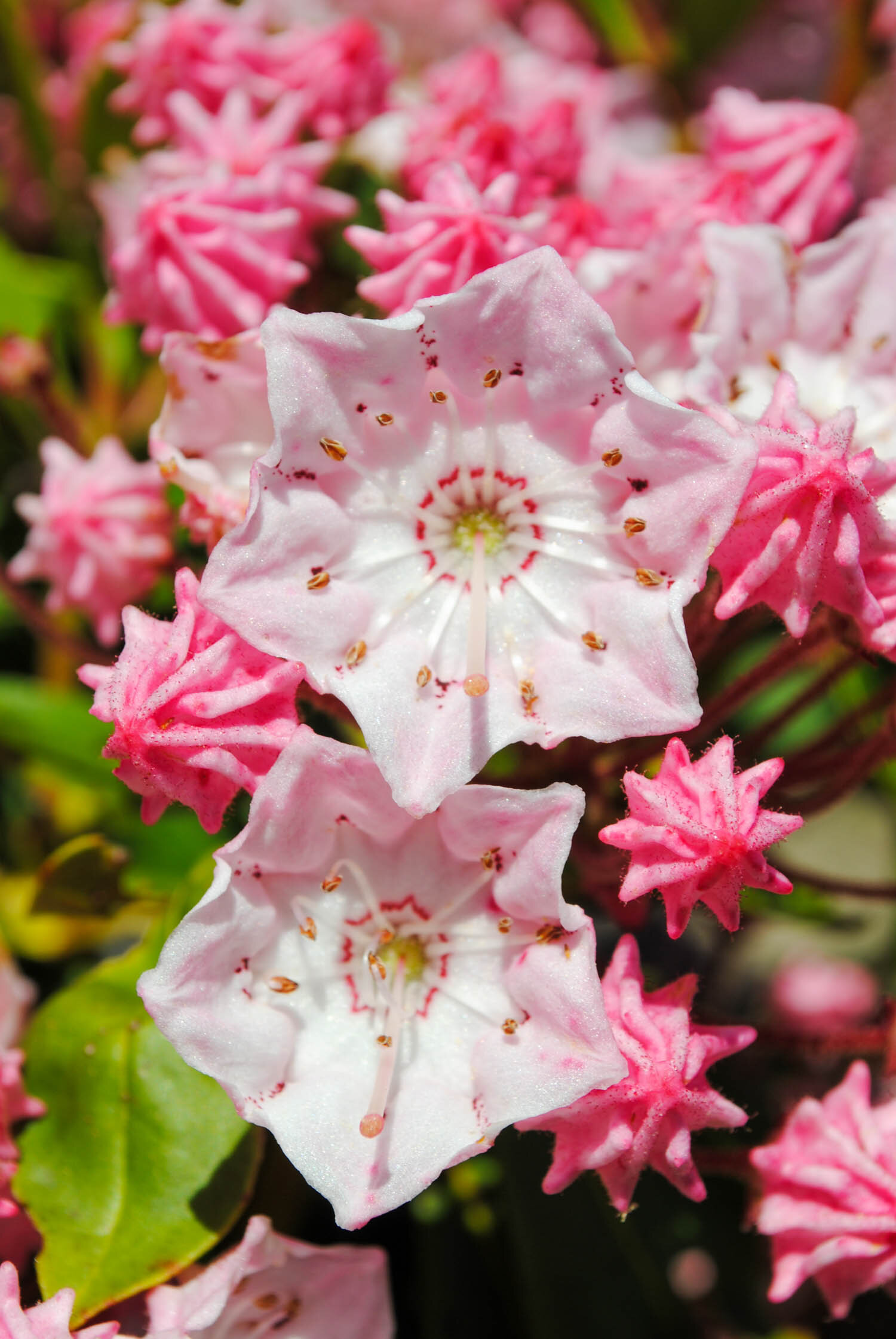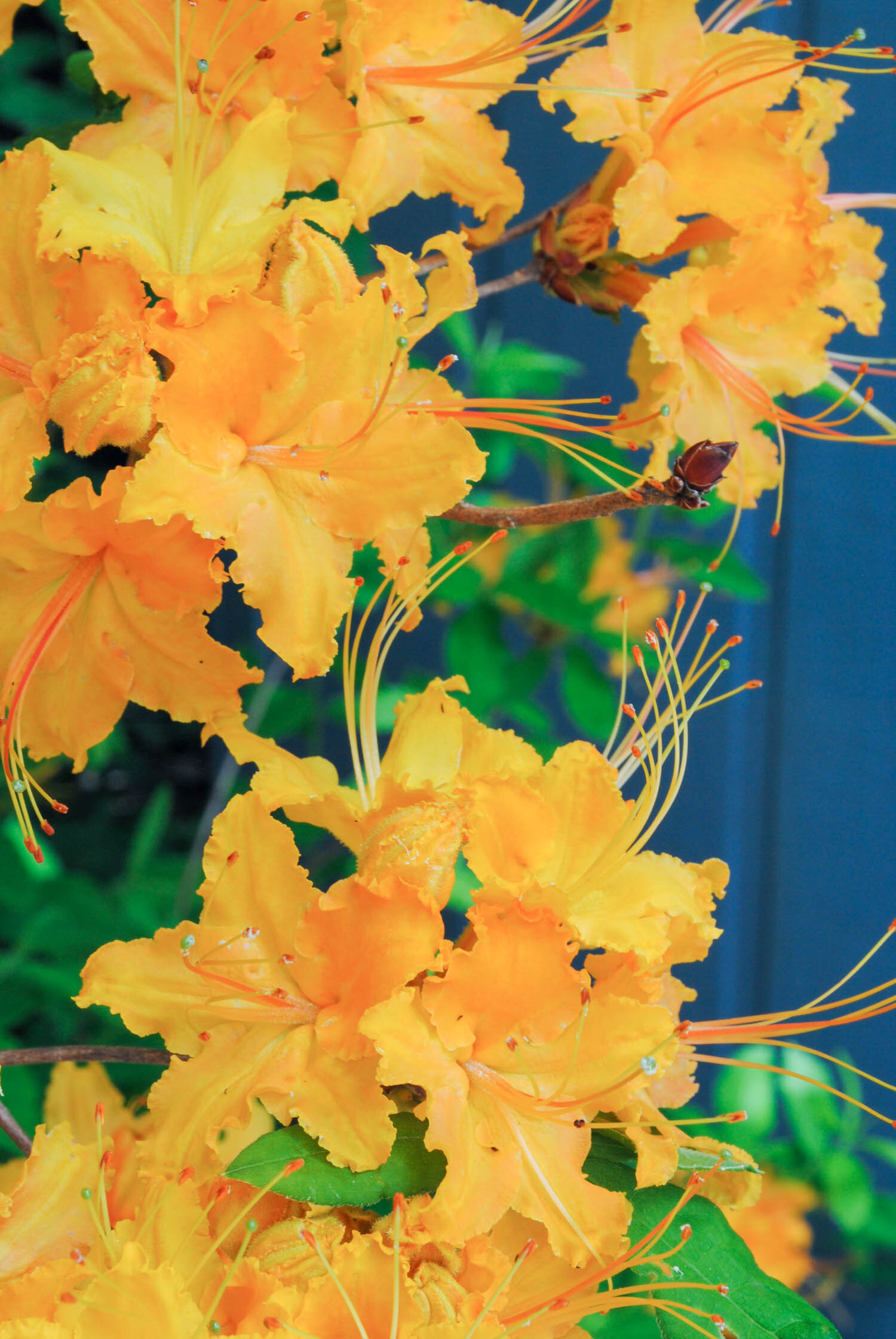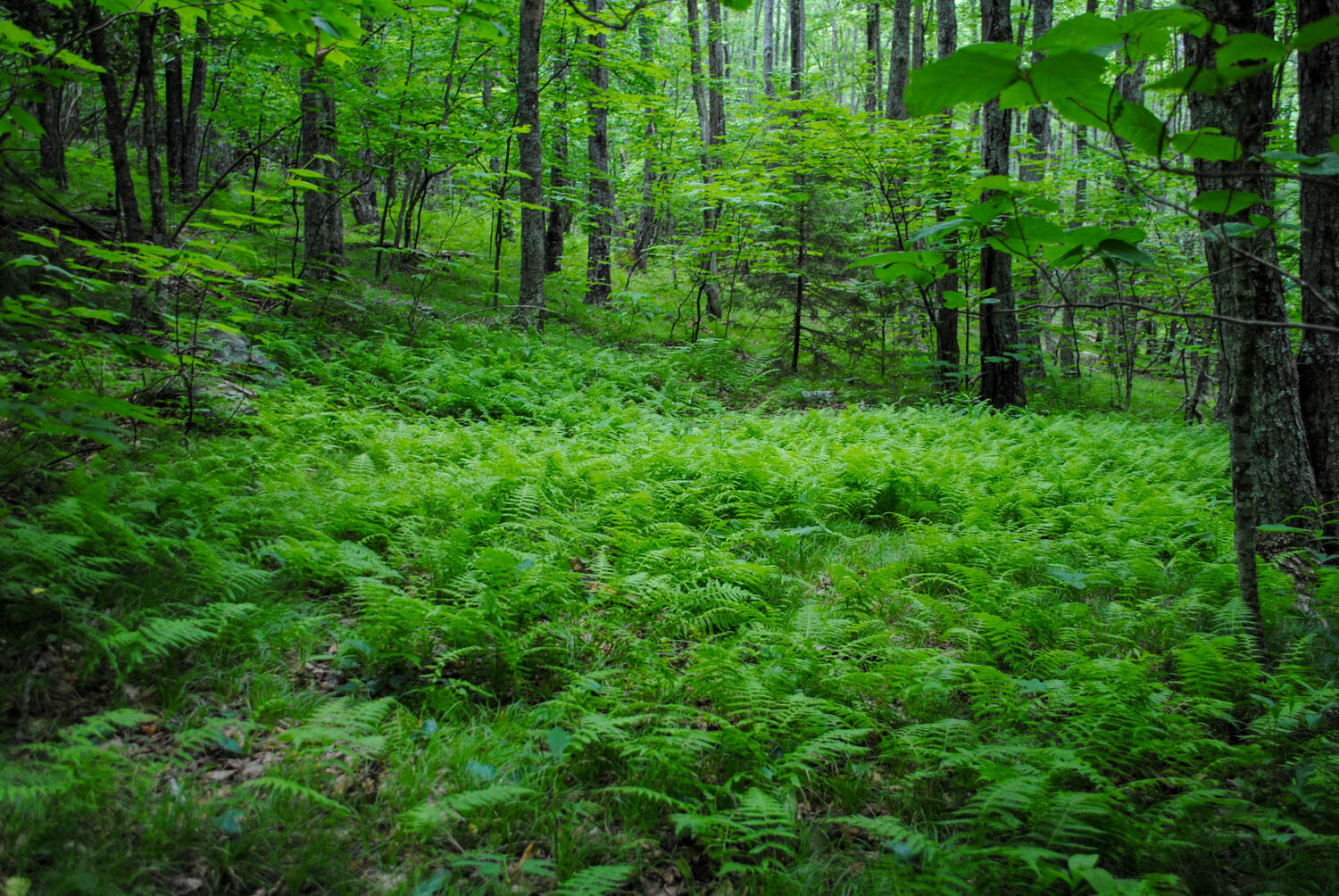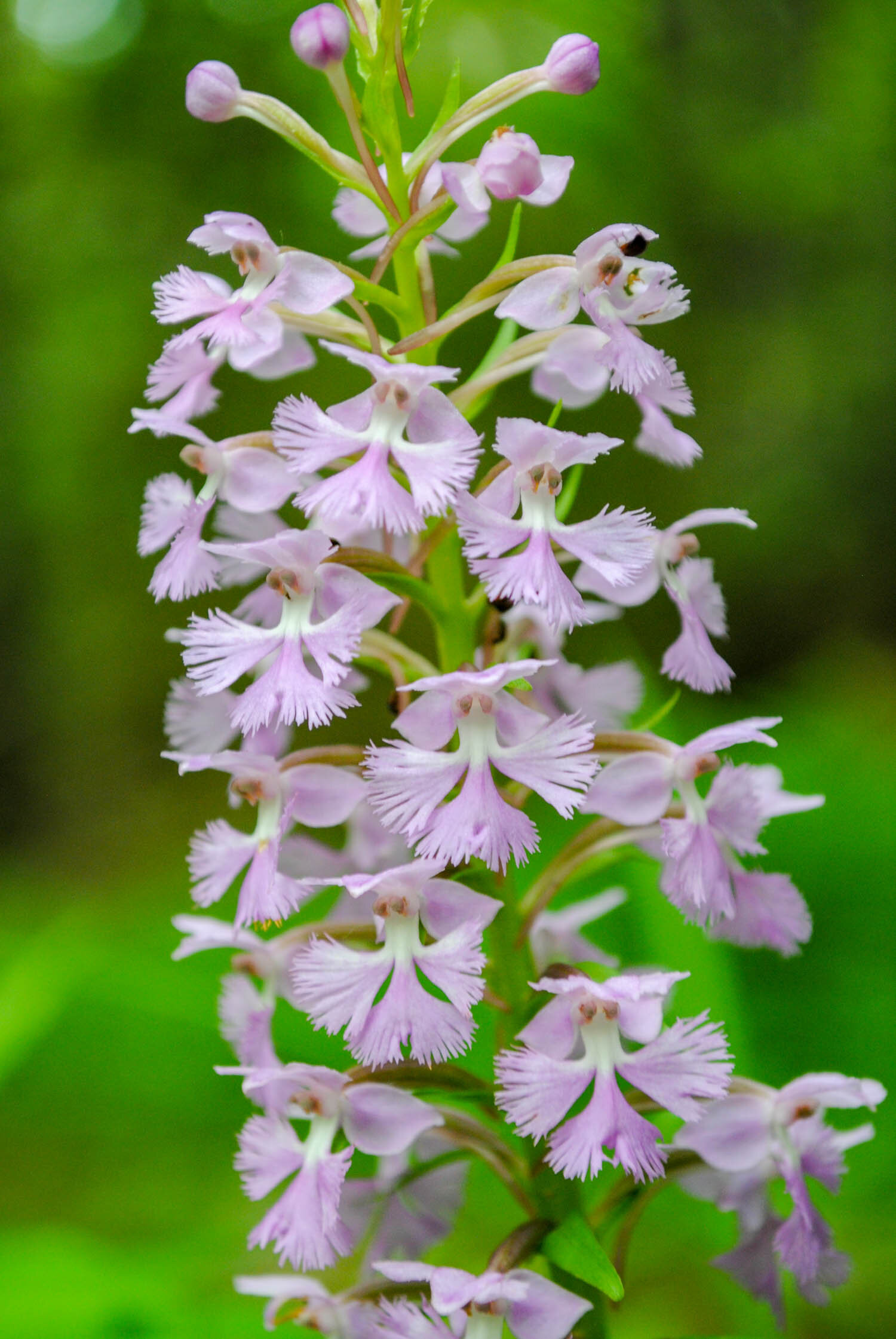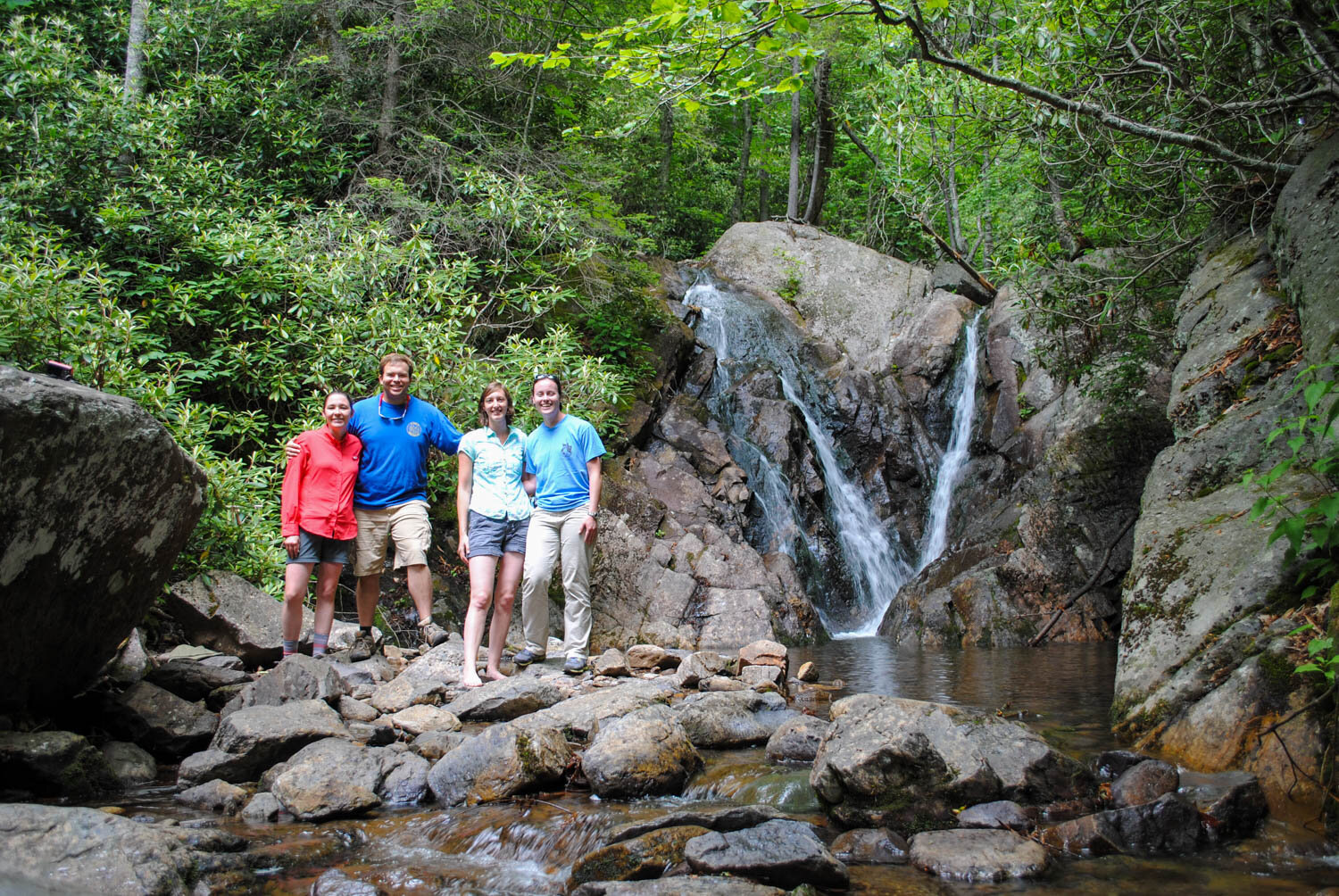Before I moved to Texas from grad school in 2014, some NC State friends and I decided to have one last hiking fling at Grayson Highlands State Park. We had heard about the wild miniature ponies in the park, and it being June, I knew that it would be a good time to venture to Virginia to see Rhododendron in bloom. So, we gave the trip a name—#rhodiesandwildponies.
We arrived Friday evening, driving under trees that pulsed with light from the firefly raves. We made camp and were eager to see what awaited us for the weekend.
Rhododendron Trail
We did two main hikes while at Grayson Highlands. The morning after we arrived, we hiked Rhododendron Trail, which promised incredible vistas, sights of wild ponies (giddy giddy!), and of course, those flowering members of the Ericaceous family that gave the trail its namesake.
The view north from an elevated spot on Wilburn Ridge in Grayson Highlands State Park.
We hadn’t made it very far on the trail when we encountered our first string of ponies. Let’s be honest. THEY WERE SO CUTE!!! And, there were even babies! These animals were introduced into the park to graze and help maintain the grassland habitats.
Isn’t this the life? Laying about on a mountain top, nibbling some leaves, and galloping through a field. Content sigh.
While visitors are encouraged to not touch or interact with the ponies (SO HARD!), we could see from a distance they came up to about waist-height on us.
Further along the trail, we enjoyed the pink blooms of Rhododendron catawbiense, the Catawba rhododendron. This native shrub/small tree is a quintessential plant of the southern Appalachians, and it grows from Alabama up through the Virginias. In some places they grew so thick they created close quarters for passersby on the trail. The plant has a fascinating survival technique to survive winter cold in these high, exposed elevations—the leaves curl and droop. Both changes help mitigate excess sunlight in cold temperatures and freeze/thaw cycles.
The lavender-pink flowers of Rhododendron catawbiense
Here you see Rhododendron catawbiense growing amongst other shrubs on this crag.
Rhododendron catawbiense can form thickets that are hard to traverse unless there is a path.
For something a bit more herbaceous, we found a few natural gravel gardens growing Micranthes petiolaris, cliff saxifrage. Saxifrage comes from the Latin saxum (meaning rock) and frangere, which means to break. It has this “rock breaker” name because many species are found growing in rock cracks. This particular species has an interesting history because it is more closely allied with more northern species than others that occur in the Appalachians. Thus, it is likely a relic from our continent’s glacial past.
Micranthes petiolaris grows in a shallow depression on a rock.
Such lovely flowers on Micranthes petiolaris. Note the three yellow dots on the petals.
We also saw several Kalmia latifolia, a plant with a way cool pollination mechanism. It has spring-loaded stamens that recoil and hit a pollinator when it lands on the flower and triggers a stamen’s filament.
Kalmia latifolia in full bloom
Note the stamens lodged in the corolla. A pollinator will free them and result in pollen being deposited on the insect.
We were a bit early to enjoy the Rhododendron calendulaceum up in the balds; however, in the camping area, they were lit with blooms.
A bit of floral diversity in Rhododendron calendulaceum seen near our campsite.
A close up of the sunny yellow form of Rhododendron calendulaceum
I loved this complementary color scheme. The yellow/orange of the Rhododendron calendulaceum contrasts brilliantly with the periwinkle-colored wood shed. It is almost like they chose that paint just for that effect!
A close up of the ruffles and fiber optic floral parts of Rhododendron calendulaceum
Cabin Creek Trail
The next morning, we hiked Cabin Creek trail, which was a very different experience from the more montane and vista-filled hike from the day before. This trail was much more wooded, and we would traverse streams with waterfalls, bogs, and ferneries. Here, again, Appalachian flora reigned in their respectable habitats.
Before we even started our hike, two clumps of ferns caught my eye. The first was the common cinnamon fern (Osmundastrum cinnamomeum), but it exhibited an unusual growth habit. The plants were arranged in a circle! Cinnamon fern spreads via rhizomes. As the plant grew, it consumed the resources in the center, and much like how suburbs spread outside cities, the rhizomes grew outward in pursuit of new land. Eventually, these travelled far enough to create the appearance of circle.
Osmundastrum cinnamomeum marking where a UFO landed or where fairies dance in the moonlight? Nah, it is just a matter of resource depletion.
The other fern I saw was one I had never encountered before, but I had heard about it—the interrupted fern (Osmunda claytoniana). I always wondered why it was called interrupted fern, and once I saw the fertile fronds with their fertile leaflets on the middle of the rachis, it made so much sense. These spore-bearing leaflets will eventually fade away and create the appearance of leaves interrupted.
Interrupted fern interrupting our hike!
A close up of the spent fertile leaf on Osmunda claytoniana
Enough ferns! Let’s get on with hiking Cabin Creek Trail!
Oh wait… a fernery!?!
On the way out, I found a beautiful orchid. Platanthera grandiflora or large purple fringed orchid likes wet spots in mountainous habitats, and we just happened upon some in bloom at the perfect time.
Is it just me or do you see hat-wearing dancers with way too much flare on their sleeves and their bell-bottoms?
My friends Deanna, Stacy, and Sarah and I stand for a pic in front of a waterfall on Cabin Creek Trail.
We wrapped up our hike, packed up, and headed back home. To this day, I still find myself thinking back to Grayson Highlands, our treks looking for rhodies and wild ponies, and the incredible balds and vistas that carpeted those Virginia mountains. I can’t wait to go back one day, and when you get a chance, I hope you’ll go, too. Again, how can you turn down seeing plants and ponies!?!
One final look southward in Grayson Highlands State Park










